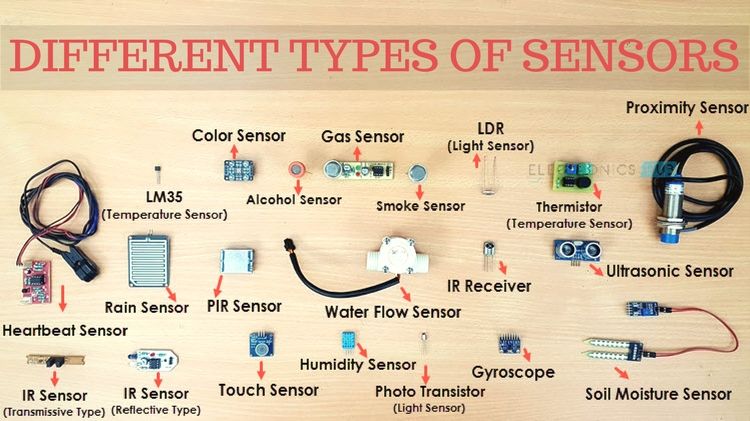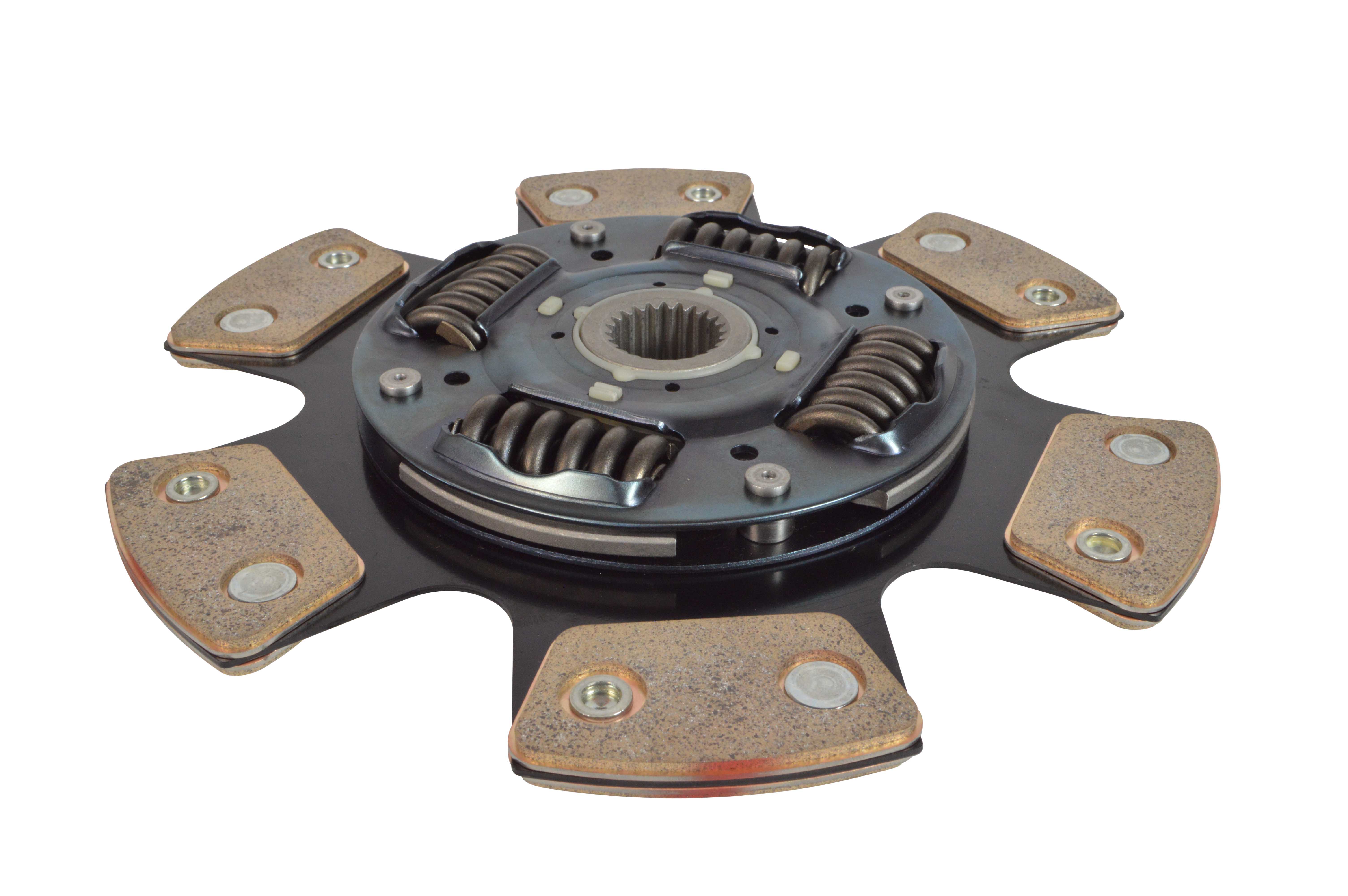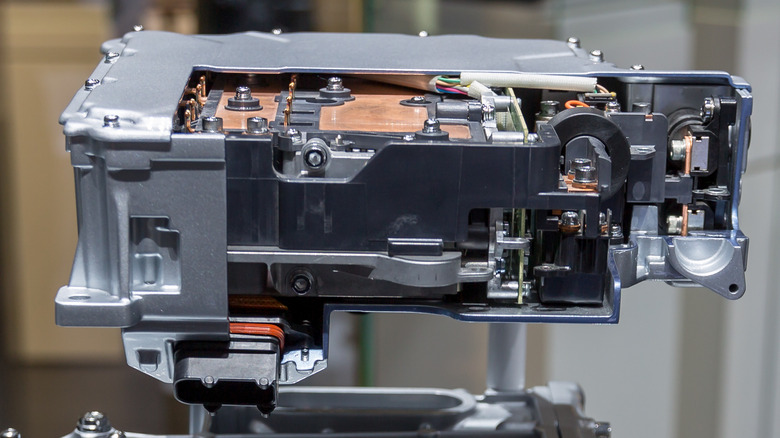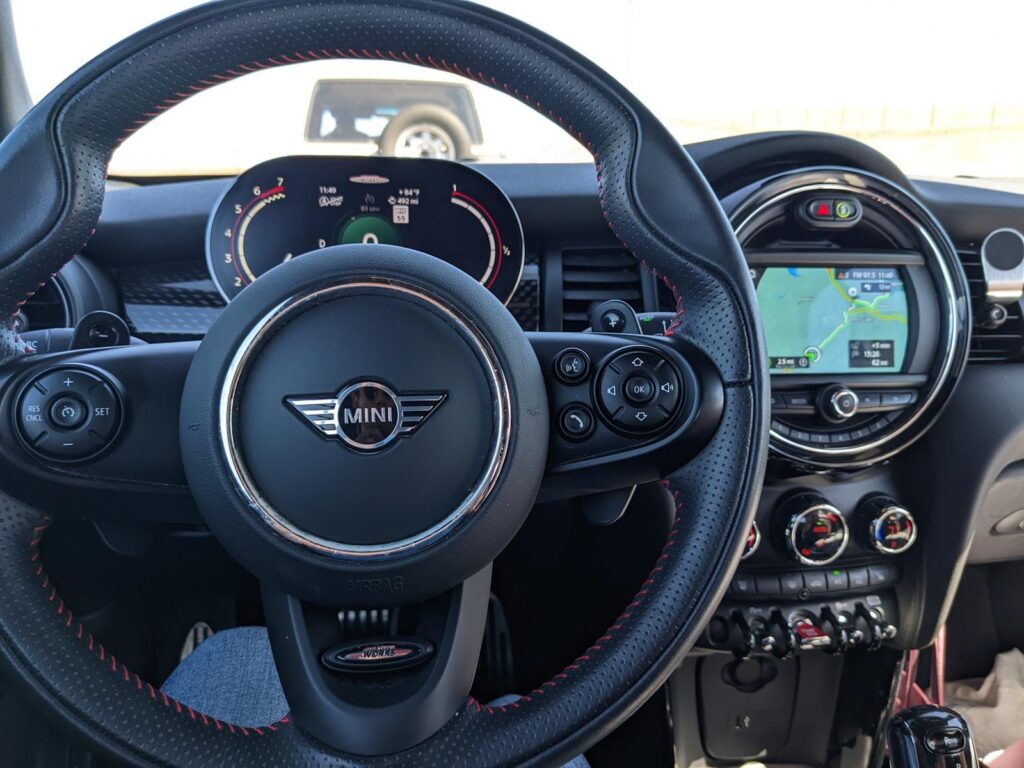
All-Wheel Drive (AWD) systems have become a cornerstone of modern vehicle design, celebrated for their promise of enhanced grip, improved stability, and superior control across diverse driving conditions. From navigating slippery winter roads to tackling moderate off-road terrains, the technology is engineered to inspire confidence. However, beneath this impressive facade lies a complex interplay of mechanical and electronic components, each susceptible to wear, malfunction, or outright failure. When these intricate systems falter, the very advantages they offer can swiftly disappear, leaving drivers in precarious situations where even a seemingly mild incline becomes an insurmountable obstacle.
The reality is that while AWD systems are designed for robustness, they are not immune to issues. Understanding the potential pitfalls and common failure points within these sophisticated systems is not just about diagnostics; it’s about proactive maintenance, informed decision-making, and ultimately, ensuring your vehicle remains reliable when you need it most. This comprehensive guide aims to peel back the layers of AWD functionality, revealing the critical malfunctions that can strip your vehicle of its much-touted traction and stability, turning a minor hill into a major headache. We’ll explore the ‘what’ and ‘why’ behind these failures, equipping you with the knowledge to identify symptoms and understand their remedies.
This article will meticulously detail the key areas where AWD systems are most vulnerable, emphasizing how a failure in any one of these components can compromise the entire system’s integrity. We will delve into specific mechanical breakdowns, electronic glitches, and maintenance oversights that can lead to diminished performance, culminating in a vehicle that “gives out” precisely when its all-wheel capabilities are called upon. By understanding these issues, vehicle owners can better maintain their AWD systems, preventing costly repairs and ensuring peak performance for a safer, more predictable driving experience.

1. **Transfer Case Malfunctions**
The transfer case stands as a pivotal component within any AWD system, acting as the central hub responsible for distributing power from the transmission to both the front and rear axles. Its proper functioning is absolutely essential for the vehicle to maintain traction across all four wheels. When the transfer case begins to falter, the consequences can be immediate and severe, directly impacting the vehicle’s ability to allocate power effectively, which is particularly noticeable on inclines or low-traction surfaces.
One of the most prevalent issues associated with the transfer case involves fluid leaks. These leaks often stem from compromised seals or gaskets, allowing the vital lubricating fluid to escape. Regular inspection of the transfer case for any visible signs of leakage is a critical preventative measure. If a leak is identified early, replacing the affected seal or gasket can prevent more extensive and expensive damage. It’s also important to regularly check the fluid level and top it off as necessary, as insufficient fluid can lead to catastrophic internal wear.
Beyond fluid integrity, the internal mechanisms of the transfer case, specifically its chains and gears, are also susceptible to failure. These components are under constant stress as they manage power distribution, and over time, normal wear and tear can lead to degradation. Such failures can manifest as grinding noises, indicating metal-on-metal contact due to worn parts or lack of lubrication. Regular maintenance, including scheduled fluid changes with the correct type of fluid, plays a significant role in prolonging the lifespan of these internal components. In instances of significant chain or gear failure, replacement of the damaged parts becomes necessary to restore the system’s functionality.
A malfunctioning transfer case can directly lead to a loss of power to one or both axles, effectively reducing a full-time AWD system to a less capable two-wheel-drive configuration, or even completely disabling traction if both axles are affected. On a mild hill, this means the vehicle might struggle to find grip, as the intended power distribution is no longer occurring. The system is essentially “giving out” because its primary power-splitting mechanism is compromised, leading to uneven power distribution or a complete inability to engage all wheels when needed. Prompt attention to transfer case issues is therefore paramount for maintaining AWD integrity and performance.
Read more about: Dashboard Warning Lights Decoded: Your Essential Guide to Understanding Vehicle Alerts and When to Act Now

2. **Differential Failures**
Differentials are another cornerstone of the AWD system, performing the crucial task of allowing wheels on the same axle to rotate at different speeds, which is absolutely necessary for smooth turns. In an AWD setup, both front and rear differentials, often in conjunction with a center differential or coupling, work in concert to ensure power is distributed appropriately, preventing wheel hop and excessive strain on the drivetrain. When these vital components begin to fail, the nuanced power delivery that defines AWD performance quickly deteriorates.
Bearing wear is a common culprit behind differential failures. The internal bearings within the differential are subjected to continuous rotational forces and load, making them prone to wear over time. This degradation often announces itself through unusual noises and vibrations emanating from the axle areas, particularly during acceleration or cornering. Early detection through regular inspections can help identify worn bearings before they escalate into more significant damage. Replacing these worn bearings is not merely a repair; it’s a necessary intervention to maintain the smooth and efficient operation of the differential and, by extension, the entire AWD system.
In addition to bearing issues, the gears within the differential itself can suffer damage. This often occurs due to prolonged wear, excessive stress, or, critically, a lack of adequate lubrication. The differential fluid plays a vital role in cooling and lubricating these high-friction gears. Neglecting regular fluid checks and changes can lead to premature gear wear, chipping, or even complete tooth breakage. Such damage directly impairs the differential’s ability to properly distribute torque, resulting in decreased performance and potentially unsafe driving conditions.
A failed differential can lead to significant handling problems and a noticeable loss of traction, especially if one wheel is spinning freely without power being transferred to the other wheel on the same axle. On a mild hill, if a differential is failing, the vehicle might struggle to climb, as power is not being efficiently channeled to the wheels with the most grip. The system effectively ‘gives out’ because a fundamental component for precise power delivery is compromised, manifesting as reduced pulling power and instability, hindering the vehicle’s capability to overcome even slight inclines.
Read more about: Unplugging the Bottlenecks: Why America’s EV Charging Infrastructure is Stalling the Electric Revolution

3. **Sensor System Malfunctions**
Modern All-Wheel Drive systems rely heavily on a sophisticated network of sensors to monitor various vehicle parameters and make instantaneous adjustments to power distribution. These electronic eyes and ears are critical for the system’s dynamic responsiveness, ensuring optimal traction and stability in real-time. When even a single sensor malfunctions, it can feed erroneous data to the Electronic Control Unit (ECU), leading to improper system operation and significantly compromising the AWD capabilities. This can be a particularly insidious form of failure, as the mechanical components might be perfectly sound, but the system’s “brain” is receiving faulty information.
Wheel speed sensors are among the most vital, continuously monitoring the rotational speed of each individual wheel. This data is indispensable for the AWD system to detect slip and precisely allocate power to the wheels with the most grip. A faulty wheel speed sensor can transmit incorrect data, leading the AWD system to either engage inappropriately, disengage prematurely, or fail to activate when needed. This can result in a sudden loss of traction, diminished performance, and potentially unsafe conditions, making the vehicle unpredictable on surfaces where AWD is typically an asset. The system, in essence, becomes blind to the actual traction conditions.
Temperature sensors also play a crucial role, monitoring the operating temperatures of various components within the AWD system, such as the transfer case or differential fluid. Overheating can lead to premature wear and damage, and the temperature sensor helps the ECU manage this. If a temperature sensor malfunctions, it might cause the system to operate incorrectly, perhaps prematurely limiting power to prevent perceived overheating, even if no actual issue exists. Conversely, it might fail to register real overheating, allowing damage to accrue unnoticed. Accurate diagnosis and timely replacement of faulty sensors are therefore critical for maintaining the system’s integrity.
The impact of sensor malfunctions extends beyond just power distribution. They can trigger dashboard warning lights, such as the “AWD Malfunction” or “Traction Control” indicators, alerting the driver to an issue. However, without proper diagnosis, the exact cause remains elusive. On a mild hill, a malfunctioning sensor might prevent the AWD system from engaging or correctly distributing power, causing the vehicle to spin its wheels uselessly, or simply lose forward momentum, behaving as if it were a two-wheel drive vehicle struggling with traction. The system hasn’t physically broken down, but its intelligence has been compromised, leading to a critical failure of its intended function.
Read more about: Car AC Not Blowing Cold? Diagnose and Fix These 12 Common Automotive Issues for a Cooler Ride

4. **Clutch Pack Degradation**
In many modern AWD systems, particularly those designed for on-demand or automatic engagement, clutch packs are instrumental in managing power distribution between the axles. These clutch packs, often electronically controlled, engage and disengage to transfer varying amounts of torque, allowing for precise and dynamic adjustments to traction. Their proper functioning is central to the seamless operation of a sophisticated AWD system, adapting to changing road conditions and driver demands. When these clutch packs begin to degrade, the system’s ability to modulate power becomes severely compromised.
Clutch pack failure can occur due to a variety of factors, primarily stemming from normal wear and tear over time or from improper maintenance. Just like any clutch, these components are designed to slip and grab, and this friction inevitably leads to wear. Continuous heavy use, especially in challenging conditions that frequently demand AWD engagement, can accelerate this wear. Furthermore, neglecting regular fluid inspections and changes can lead to a breakdown of the lubricating and cooling properties of the fluid within the clutch pack assembly, exacerbating wear and potentially causing overheating.
Symptoms of degrading clutch packs can include a noticeable decrease in the AWD system’s performance, such as a hesitation in engagement or a feeling of slippage when power is supposed to be transferred. Drivers might experience reduced traction in adverse conditions, or a sense that the vehicle is not responding as expected when driving on uneven or slippery surfaces. In some cases, unusual noises or vibrations might also accompany clutch pack issues, indicating internal friction or components struggling to engage smoothly.
When clutch packs degrade significantly, the AWD system loses its ability to effectively transfer torque to the wheels that need it most. On a mild hill, if the clutch packs cannot properly engage to distribute power, the vehicle might struggle to find grip, with power potentially being sent primarily to a wheel that is slipping, or failing to engage the secondary axle altogether. This effectively causes the AWD system to ‘give out’, as it can no longer deliver its core promise of adaptable, all-wheel traction. Prompt diagnosis and replacement or repair of failing clutch packs are essential to restore the AWD system’s dynamic capabilities and ensure reliable performance.
Continuing our deep dive into the vulnerabilities of All-Wheel Drive systems, we shift our focus to several other critical areas where these sophisticated setups can surprisingly falter. It’s often the subtle, less-obvious component failures or maintenance oversights that can render an otherwise capable AWD vehicle ineffective, especially when confronted with something as seemingly benign as a mild hill. Understanding these additional failure points is paramount for comprehensive vehicle care and ensuring your AWD system truly delivers when it matters most.
Read more about: Rust Resistance Rundown: Identifying the Vehicles That Conquer and Crumble in the American Salt Belt

5. **Electronic Control Module (ECM) Issues**
The Electronic Control Module (ECM) serves as the central brain of a modern AWD system, meticulously orchestrating power distribution, monitoring various system parameters, and making instantaneous adjustments to optimize traction and stability. It processes data from an array of sensors, making real-time decisions that dictate how and when power is sent to each wheel. When the ECM experiences problems, it can lead to a complete breakdown of the AWD system’s intelligence, irrespective of the mechanical components’ health.
ECM issues can manifest in various forms, ranging from software glitches and corrupted programming to outright hardware failures. Software bugs, for instance, can cause the system to misinterpret sensor data, leading to incorrect power allocation or even unexpected engagement or disengagement of the AWD. Such erratic behavior can be not only frustrating but also dangerous, as the vehicle’s response becomes unpredictable in changing road conditions.
Diagnosing ECM problems often requires specialized diagnostic equipment and software, as generic OBD-II scanners may not always pinpoint the specific internal malfunctions of the control module. A qualified technician might need to reprogram the ECM with updated software or, in more severe cases of hardware failure, replace the entire unit. Neglecting these issues can cause a domino effect, leading to further damage as other components are forced to operate outside their intended parameters due to erroneous commands from the compromised ECM.
On a mild incline, an AWD system suffering from ECM issues might fail to engage the necessary wheels, improperly distribute power, or even disengage entirely, making it unable to find purchase. The vehicle essentially behaves as though its sophisticated traction management system has been rendered inert, leaving it struggling where a functioning AWD would effortlessly climb. The “giving out” here is a failure of the system’s central intelligence to command the mechanical components effectively.
Read more about: Decoding the Dread: 11 Imported Car Engine Problems That Keep Owners Up at Night

6. **Driveshaft and CV Joint Problems**
The driveshafts are critical mechanical links in any AWD system, responsible for transmitting rotational power from the transmission to the differentials, and subsequently to the wheels. Complementing these are the Constant Velocity (CV) joints, which are ingenious components allowing for the smooth and efficient transfer of power even as the suspension articulates and the wheels turn at various angles. Their robust yet flexible design is essential for maintaining consistent power delivery through the vehicle’s range of motion.
Over time, both driveshafts and CV joints are subjected to immense stress and wear. Common issues include worn universal joints (U-joints) in driveshafts, which can lead to imbalance and vibrations, particularly noticeable at higher speeds. CV joints, typically protected by rubber boots, are vulnerable to tears in these boots, allowing dirt, debris, and moisture to enter while vital grease escapes. This contamination rapidly accelerates wear on the internal bearings of the CV joint.
Symptoms of driveshaft or CV joint problems often include noticeable vibrations or shuddering felt through the vehicle, especially during acceleration. A failing CV joint can produce a distinct clicking or popping sound, particularly when turning or during heavy acceleration. These noises and vibrations are not merely annoyances; they indicate a compromise in the drivetrain’s integrity and can signal imminent failure, potentially leading to a complete loss of power to an axle.
When these components degrade significantly, the smooth, uninterrupted flow of power within the AWD system is disrupted. On a mild hill, if a driveshaft is unbalanced or a CV joint is failing, the vehicle might experience inconsistent power delivery to the wheels. This interruption can lead to a momentary loss of traction, as the engine’s power is not efficiently reaching the ground, causing the AWD system to ‘give out’ when steady, reliable torque is most needed to ascend the incline.
Read more about: Mastering Classic Car Longevity: An Expert Guide to Keeping Your Vintage Beauty Running for Decades

7. **Critical Fluid Maintenance Oversights**
Within the intricate mechanics of an AWD system, various specialized fluids play a role as critical as the components themselves. From the lubricating and cooling functions of transfer case fluid to the essential properties of differential gear oil, these fluids are not just accessories; they are vital for the longevity, performance, and indeed, the very operation of the system. Neglecting their maintenance is akin to starving the heart of a complex machine.
Each fluid within the AWD system—be it for the transfer case, front differential, or rear differential—has a specific lifespan and viscosity rating. Over time, these fluids degrade, losing their lubricating properties, becoming contaminated with metallic particles from wear, and breaking down under heat and stress. This degradation directly leads to increased friction, accelerated wear on internal gears and bearings, and potentially catastrophic overheating of components that rely on the fluid for cooling.
Adherence to the vehicle manufacturer’s recommended maintenance schedule for fluid changes is not merely a suggestion; it’s a critical preventative measure. Using the correct type and quantity of fluid, as specified in the owner’s manual, is equally important, as improper fluids can cause compatibility issues, foaming, and inadequate lubrication. Regular inspection of fluid levels and condition can provide early warnings, allowing owners to top off or change fluids before significant damage occurs.
Ignoring fluid maintenance can lead to a cascade of problems. For example, neglected transfer case fluid can result in chain and gear failures, as discussed previously. Similarly, old or insufficient differential fluid will lead to premature bearing wear and gear damage, compromising the differential’s ability to smoothly distribute torque. These issues can culminate in reduced efficiency, increased noise, and ultimately, component failure.
On a mild hill, if an AWD system’s fluids are severely neglected, the internal components like gears, chains, and bearings will experience excessive friction and heat. This can cause them to bind, slip, or even seize, preventing effective power transfer. The system will “give out” not due to a sudden mechanical break, but because the fundamental medium designed to enable its smooth operation has been allowed to degrade beyond its functional limits, literally causing the internal mechanisms to grind to a halt.
Read more about: The 13 Riskiest Car Customizations That Can Instantly Void Your Warranty: What Every Enthusiast Needs to Know

8. **General Drivetrain Bearing Wear**
While we previously touched upon bearing wear within differentials, the entire drivetrain of an AWD vehicle is populated with various other bearings that are equally crucial for smooth operation and power transfer. These include wheel bearings, propeller shaft support bearings, and additional internal bearings within the transmission or transfer case that are distinct from the primary gear sets. Each of these components is designed to minimize friction and support rotational motion, enduring constant stress and load.
Over tens of thousands of miles, these bearings inevitably experience wear and tear. Factors such as aggressive driving, poor road conditions, impacts, and simply the passage of time contribute to their degradation. When a bearing begins to fail, its internal rollers or races wear down, creating excessive play and increasing friction. This often manifests as a distinct humming, whining, or grinding noise that changes with vehicle speed or load.
Ignoring the early signs of bearing wear can lead to more significant problems. A severely worn wheel bearing, for instance, can not only compromise steering stability and braking effectiveness but also put undue strain on other drivetrain components. Similarly, a failing support bearing for a driveshaft can cause severe vibrations that reverberate through the entire vehicle, potentially damaging universal joints or other parts further down the line.
When a crucial drivetrain bearing is compromised, it introduces inefficiency and resistance into the power delivery path. On a mild hill, the increased friction and mechanical resistance from a failing bearing can sap valuable engine power, making it harder for the vehicle to maintain momentum. The AWD system, in essence, is forced to work against itself, and the vehicle may struggle to climb, demonstrating that even seemingly small frictional losses from worn bearings can cause the entire system to ‘give out’ under load.
Read more about: Beyond 300,000 Miles: Unpacking the Most Durable Car Engines Ever Made

9. **Tire Inconsistencies**
It might seem counterintuitive to link tire condition directly to AWD system failure, but the reality is that the integrity of an All-Wheel Drive system is profoundly reliant on the consistency of all four tires. Modern AWD systems, especially those with advanced electronic controls and torque vectoring, depend on accurate wheel speed sensor readings to function correctly. Any significant discrepancy in tire size or wear can mislead the system’s ‘brain’ and dramatically impair its performance.
The core issue stems from mismatched tire diameters. Even a small difference in circumference between tires, whether due to different brands, models, or varying levels of wear, means that each wheel will rotate at a slightly different speed over the same distance. The AWD system’s sensors detect these discrepancies and interpret them as wheel slip, even when no actual loss of traction is occurring. This leads to the system engaging or disengaging inappropriately, or constantly trying to correct a non-existent slip.
This continuous, unnecessary engagement and disengagement puts immense strain on the AWD components, particularly the transfer case, differentials, and clutch packs. Over time, this can accelerate wear and lead to premature failure of these expensive parts, necessitating costly repairs. Furthermore, the system’s constant ‘confusion’ can result in diminished fuel efficiency and a noticeable reduction in the vehicle’s handling and stability, making it less predictable.
Therefore, maintaining uniform tire sizes and ensuring consistent wear across all four tires through regular rotation is not just good practice for tire longevity; it is absolutely critical for the health and optimal functioning of any AWD system. Most vehicle manufacturers explicitly state this requirement in their owner’s manuals, often warning against using mismatched tires to prevent damage to the drivetrain.
On a mild hill, an AWD system plagued by tire inconsistencies will struggle because it’s receiving contradictory information. It might send power to the wrong wheels, or it might constantly attempt to engage its traction mechanisms when they’re not truly needed, leading to overheating or premature wear. The system effectively ‘gives out’ not because of a mechanical breakdown, but because its operational intelligence is compromised by false readings, preventing it from applying power effectively to overcome the incline.
Read more about: Rust Resistance Rundown: Identifying the Vehicles That Conquer and Crumble in the American Salt Belt
As we conclude this comprehensive examination, it’s clear that the robust capabilities of All-Wheel Drive systems are underpinned by a delicate balance of mechanical precision, electronic intelligence, and meticulous maintenance. Each of the nine points we’ve explored underscores a specific vulnerability that, if unaddressed, can transform a mild incline into an insurmountable challenge. Understanding these potential pitfalls — from the brain’s electronic glitches to the subtle impacts of tire variations — is not just about troubleshooting; it’s about empowering vehicle owners to safeguard their investment and ensure their AWD system remains a reliable partner on any journey, truly delivering its promise of superior traction and control. Staying informed and proactive with maintenance is the ultimate key to unlocking the full potential and enduring performance of your all-wheel drive vehicle.



